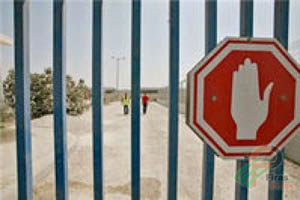
Introduction
Civilians in the Gaza Strip, who already suffer deteriorating incomes and low purchase capacity, have real concerns regarding the increase in the price of goods, including basic foodstuffs. The price increase in the Gaza Strip is connected to international price increases;food prices have increased by 50%[1]. However, the high price increases at the international level are exacerbated by the blockade of the Gaza Strip,
and the resultant severe shortage of goods flowing into Gaza. As a result, Gaza civilians are forced to stockpile basic needs before they are sold out, a situation which itself results in increased prices. The price increase affects civilians purchase capacity and accordingly their capacity to ensure their basic needs.
During the reporting period Israeli occupation forces (IOF) restricted the number of goods allowed into the Gaza strip to 9 items causing severe shortage of goods and supplies in Gaza markets. In addition, some traders stockpiled goods in order to manipulate market prices. This was possible consequent to a lack of governmental supervision and occurred in spite of the deteriorating living conditions of local civilians.
The price increase indicators in the Gaza strip reveal a serious humanitarian catastrophe affecting all segments of society. The situation is compounded by an unprecedented increase in poverty and unemployment rates. During the reporting period, prices increased by 16.26%. The general consumer price index number for the Gaza Strip with its 1996 base year (1996 = 100) increased to 164.41 in March 2008, up from 141.42 in July 2007[2]. The prices of some supplies – such as petroleum products and cooking gas – increased by 300%, the price of local agricultural products rose by 500%.
Price increases have affected the economic and social rights of Gaza’s civilians, including those rights relative to an adequate standard of living, health, food, work, and education[3]. Civilians’ purchase capacity decreased consequent to both dramatic price increases and the massive deterioration of the American dollar’s value. Civilians were obliged to change their consumption patterns; they were forced to reduce expenditure on secondary goods, in an attempt to ensure their basic needs of food and medicine. International humanitarian reports indicate that 40% of Gaza civilians – approximately 600,000 individuals – do not have access to enough food. This is a violation of civilians’ right to an adequate standard of living and accordingly their right to life.
In order to confront the price increase crisis in the Gaza Strip, the Government in Gaza must reconsider its policies and procedures and re-develop a plan aimed at protecting civilians against price increases and ensuring their economic, social, cultural, civil and political rights.
This report, covering the period July 2007 through June 2008, highlights the price increases in the Gaza Strip. It reviews its causes, its consequences, and the impact on the economic and social rights of Gaza’s civilians. It presents some suggestions and solutions that may reduce the negative effects of the price increase phenomenon on civilians’ lives and their capacity to obtain basic needs; including food, medicine and other essential goods.
[1] For more details, please visit http://www.albankaldawli.org
[2] The Palestinian Central Bureau of Statistics, Statistics on Consumer Price Index. The general consumer price index number is a measure of the
average change in prices over time of goods and services purchased by households. Laspeyres Formula was used to measure the general price
consumer index as: total of (base year quantities * comparison year prices) ÷ total of (base year quantities * base year prices) X 100.
[3] The International Covenant on Economic, Social and Cultural Rights was approved by the UN General Assembly under resolution 2200 (XXI) of 16 December 1966. 10 years later, the covenant came into force; on 3 January 1976. it includes obligations imposed on contracting parties to ensure the enjoyment of all rights provided for in the covenant and it includes mechanisms to protect these rights. The rights provided for in the covenant include rights to work, health, adequate standard of living, education, …etc.